We occasionally link to goods offered by vendors to help the reader find relevant products. Some of these may be affiliate based, meaning we earn small commissions (at no additional cost to you) if items are purchased. Here is more about what we do.
I’d been curious about sous vide cooking for a long time.
This is when you cook a piece of meat or fish sealed in a plastic bag in a water bath that brings it – and holds it – at temperature to reach a perfect level of doneness, whether that be rare, well-done, or something in between.
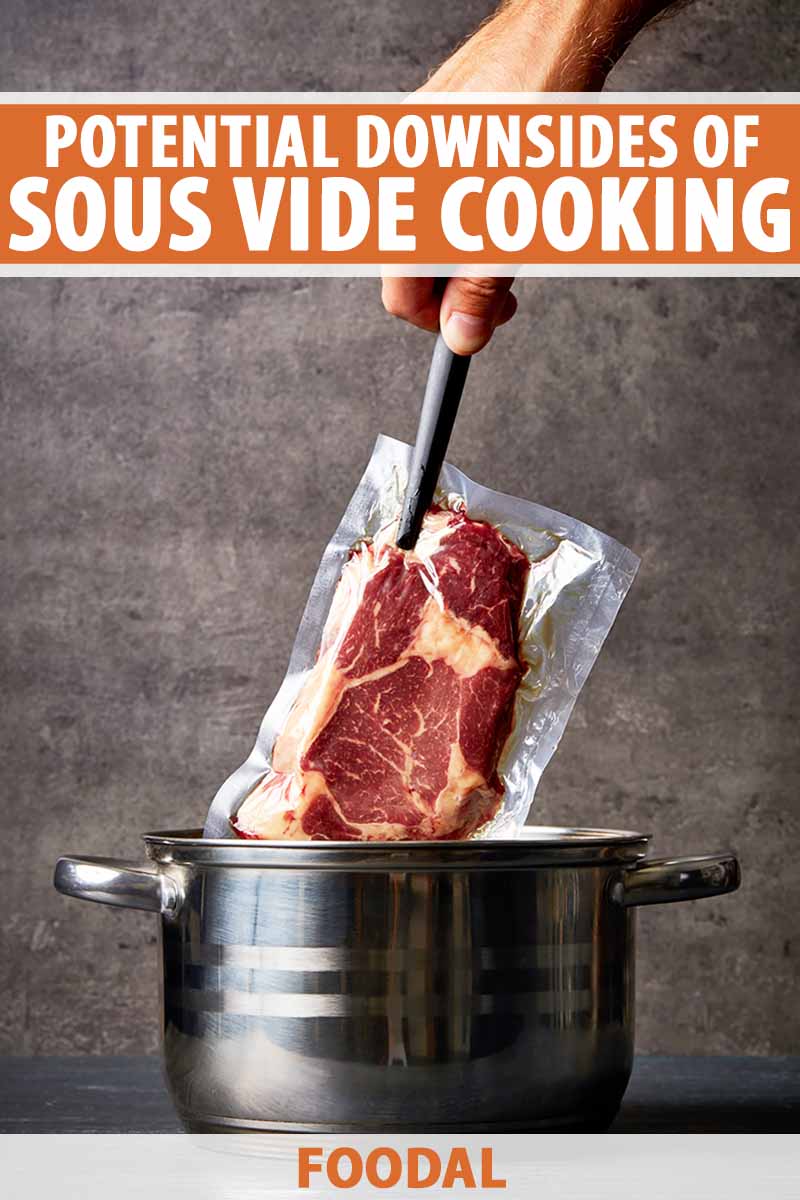
It seemed like it might make a wonderful addition to my kitchen repertoire, since I’m as carnivorous as they come. No Meatless Mondays for this meat-atarian!
So, when a foodie friend of mine told me that she recently got her own sous vide setup, I insisted that I had to try it, and asked her for recommendations to get set up in my own kitchen.
But I have to be honest – and that’s why we’re here. I found nothing to like about this style after testing it out at home.
At the end of the day, it’s terribly wasteful. It’s time-consuming. It uses a LOT more kitchen items that need to be washed than other methods.
And based on my experience, the food is no better. In some cases, it’s actually worse than food prepared in more traditional ways – I’m looking at you, poached eggs!
For others with different cooking styles or needs, maybe you’ll disagree. So let’s explore what’s involved in sous vide cooking.
Here’s what’s to come in this article:
What You’ll Learn
Let’s start at the beginning.
How Sous Vide Became a Thing
Sous vide hasn’t been around for very long as a home preparation method. After its first introduction in France in the ‘70s, it first started appearing in restaurant kitchens in the US in the early 2000s.
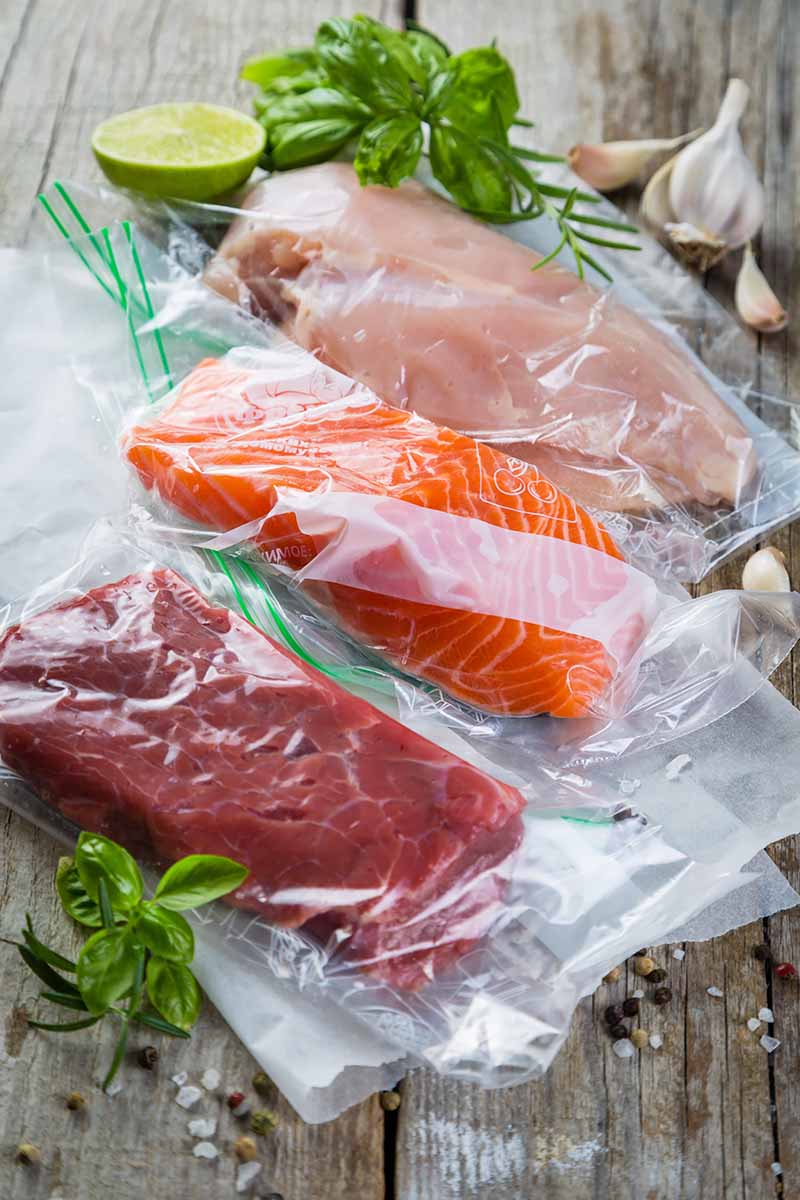
I first became aware of it myself when I was writing health and fitness articles in the mid-to-late aughts. Paleo was the hot diet of the moment, and the paleo folks were all about this style of preparing food because: meat.
In fact, I believe I can say with some authority that the Paleo Diet is what put sous vide on the home kitchen map.
At the time, there were no affordable circulators available, but there were plenty of “hacks” you could find on the internet to turn your Crock-Pot, rice cooker, or stew pot into a sous vide appliance using various tools. Today, commercial options for home cooks abound.
What Is Sous Vide?
Sous vide cooking allows you to cook an entire piece of meat or fish to an exact temperature from end to end. No more red innards with charred sides. Nope, just perfectly rare, medium rare, or whatever level of doneness you like, through and through.
Some also use this method to prepare tough or hard vegetables like carrots and kale, or to prepare soft eggs or dairy-based foods like yogurt and custards.
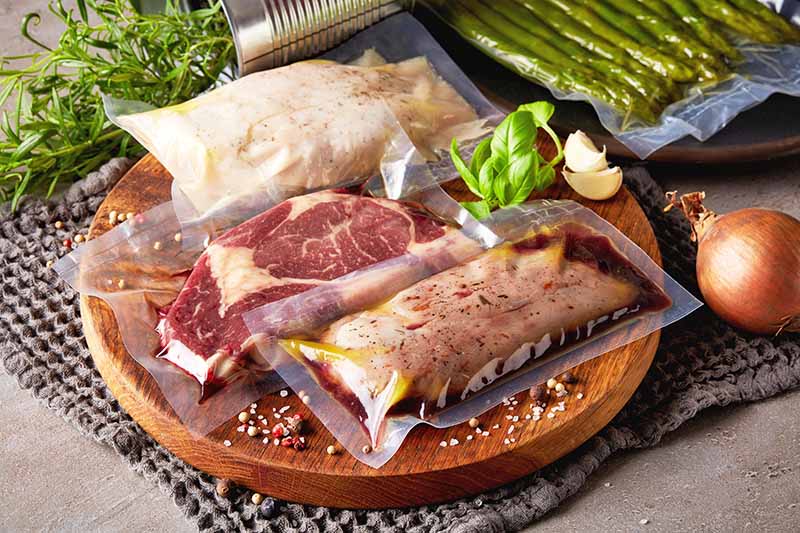
This happens by cooking the item in a sealed plastic bag in a water bath that is set to the temperature you want your protein cooked to – say, 135°F for medium-rare beef.
That is one its main selling points: once your food item gets to that temperature, you can then “hold” it in the bath until you’re ready to eat and it doesn’t continue to cook (although, spoiler alert, this is only for up to about four hours max at temperatures under 140°F, or the food starts getting mushy and food safety starts to become a serious concern).
Being able to achieve this type of exact and consistent result is awesome – if you run a restaurant and need a bunch of lamb chops, pork chops, salmon fillets, or sirloin steaks to be ready to serve at a moment’s notice from 6 to 10 p.m., for example.
All you have to do is fish one of the packets out of the water bath, or out of the fridge where you’ve stored them after cooling. Foods could be frozen too, but they will of course need to be defrosted before finishing and serving.
Sear the item in a hot pan to finish it, plate it, and – voila! Dinner is served within a few minutes to all 40 people who just ordered the lamb special of the day.
In a home kitchen, I find that makes much less sense. Here are the reasons why:
So. Much. Waste.
I don’t consider myself much of an environmentalist. I mean, I separate my recyclables, but I also have a convenient pod-based coffee maker.
Yet, literally the first thing that struck me about sous vide cooking when I started experimenting with it myself was the amount of wasted water. You have to have a container to hold the water, and the container needs to be deep enough that you can fill it up to reach between the minimum and maximum fill lines of the water circulator.
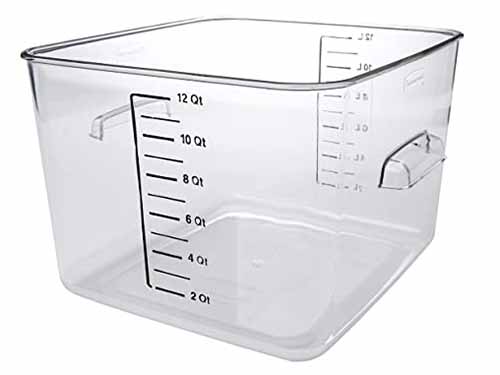
12-Quart Rubbermaid Food Storage Container, available on Amazon
As recommended by my friend, I bought a 12-quart Rubbermaid Food Storage Container with the Everie Collapsible Hinged Sous Vide Container Lid. Both of these are available from Amazon.
I paired them with a well-reviewed circulator, the Anova Culinary Sous Vide Precision Cooker Nano, also available to purchase from Amazon.
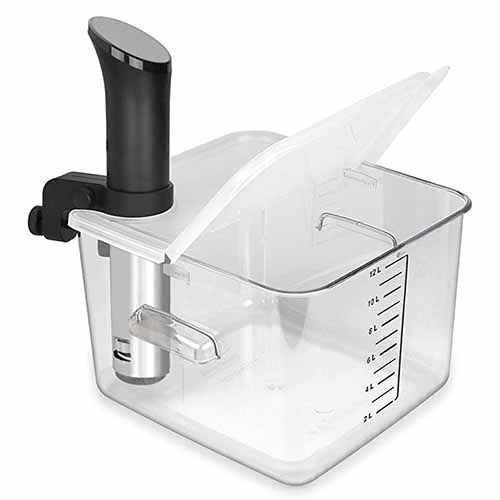
Everie Collapsible Hinged Sous Vide Container Lid, available on Amazon
I will say that all of the actual equipment worked great, exactly as advertised. It was the method itself that I had an issue with.
Using the Rubbermaid container that I bought, which is marked with clear measurements, you need at least 8.5 quarts of water to get it to a depth where the Anova cooker will operate.
When you’re done, you dump the water out. That’s a lot of wasted water.
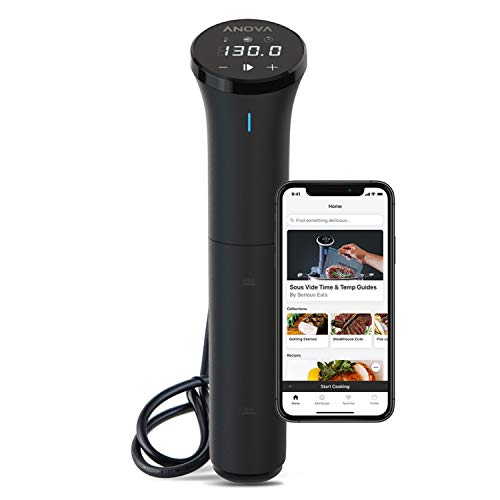
Anova Culinary Sous Vide Precision Cooker Nano, available on Amazon
For comparison’s sake, I will mention that your standard pound of pasta is typically boiled in four to six quarts of water. And whereas salted, starchy water can’t be reused to, say, water the houseplants, I suppose you could technically put your water to good use after allowing it to cool, if you wanted to. But you can’t drink it or give it to your critters.
Next, in terms of expense and the necessity of finding extra storage space for new equipment, I will mention that it doesn’t matter what kind of container you use. To prepare certain items, I switched to a small stock pot. The one I used was almost too small to allow the Anova to properly circulate, but it still needed to be filled with four quarts of water to get it to the minimum fill line.
You also can’t leave the water in your appliance to reuse it. This is not a good practice, food-safety-wise. There is a risk of bacterial or fungal growth if your tools and other implements aren’t cleaned and sanitized properly, starting with fresh water each time.
Treating used water with a bit of bleach could work… But cooking in bleach? I don’t think so!
Of course, the water waste is just part of the story.
Every item you prepare via this method has to be sealed in a plastic bag – sous vide is actually French for “under vacuum.”
While many people use vacuum sealers, I didn’t want to invest in one until I was sure I was going to use this method often. Instead, I used zip-top plastic bags and what’s called the “water displacement method,” which is just a simple way of getting all the air out of a plastic bag before sealing it.
When the food is cooked, you throw the plastic bags in the trash.
Clean zip-top plastic bags are recyclable in some areas, and grocery and hardware stores that take plastic shopping bags for recycling will probably accept these as well. But in many neighborhoods and municipalities, you can’t just put them in the bin with the rest of your recyclables.
This may mean an extra trip to the drop-off station, or another drop in the hugely overfilled bucket of excess plastic packaging in the landfill.
To recap: Say you’ve cooked two steaks. You’ve used 8.5 quarts of water at least, and thrown away two plastic bags that are contaminated with food juices.
And that’s just for one entree.
Water shortages and the growing problem of what to do with unrecyclable, non-reusable plastic garbage are already a thing. This is not helping.
Nothing Is Actually Cooked, Yet
I’m not lazy, but I am efficient, and I don’t like to create more work for myself than I have to.
This brings me to an explanation of what puzzled me the most about this preparation: it requires more steps than just cooking the dang food by any other method.
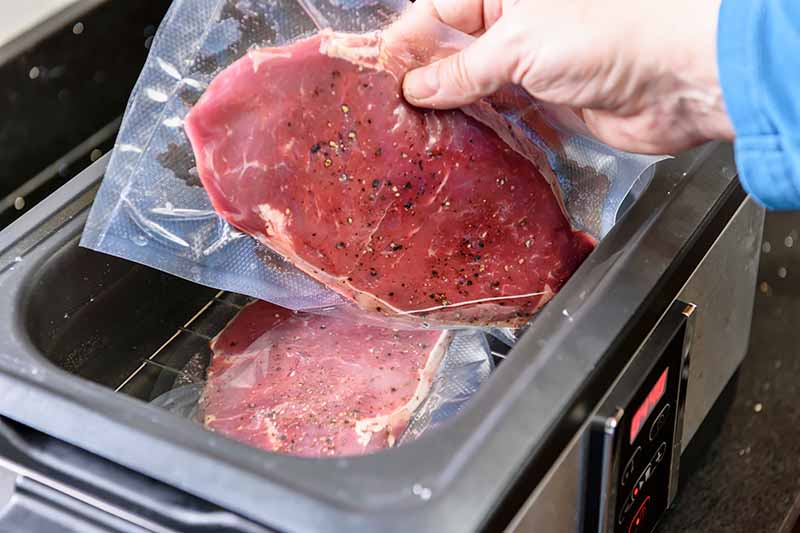
That’s because, while any item prepared this way is done to a perfectly consistent temperature, it’s not yet ready to eat – you still have to finish it by some other method in most cases. Otherwise, what you have is a rather pale, flaccid piece of meat or other food that is tepid, at best.
So, once you remove it from the water bath, at least where proteins are concerned, you need to then sear it – not only to give it that crackly brown crust that intensifies its flavor via the Maillard reaction, but also to bring it up to temperature if it was cooked low and slow, or stored in the fridge or freezer before serving.
To cook a steak on my stovetop, I heat a cast iron pan, add fat, sear the steak, and plate it.
Using my grill is even easier, since I don’t have the pan to wash, but I will have to clean the grill eventually.
To sous vide a steak, on the other hand, you have a more involved process to deal with:
- Fill sous vide cooker with water.
- Put your steak in a bag and seal it.
- Cook it (and it takes a long time).
- Remove it from the bag, or allow it to cool for cold storage in the fridge or freezer.
- Place the steak on a platter or cutting board and dry it with paper towels (defrosting first, if necessary).
- Finish the steak in a preheated cast iron pan or on the grill.
- Plate the steak and serve.
This adds both time and additional stuff you have to wash when you’re done eating. I’ll admit that a lot of this time is passive, like what you’re used to when you add ingredients to your slow cooker and walk away. But with that particular countertop appliance, at least I can look forward to knowing the stew or chili will be ready to eat when the timer goes off.
And don’t even get me started on eggs. Everyone goes bananas over how amazing sous vide is supposed to be for poaching or soft boiling eggs, but I simply disagree.
I cooked eggs until I was clucking and I just don’t get it. You cook the eggs, in their shell, in the appliance – and then I found I still had to finish cooking them the traditional way in a pan of water until they were done because they came out so runny.
What the heck? Why not just make them in a pan in the first place?
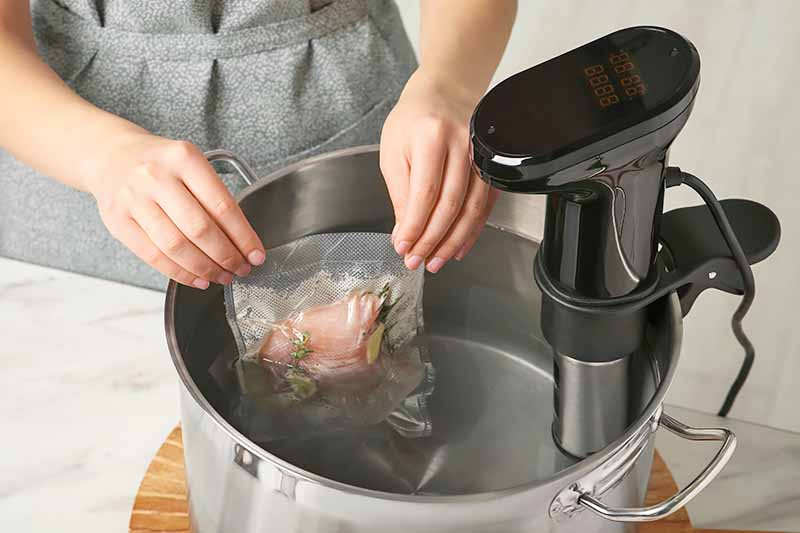
I actually found a recipe that claimed to result in the perfect poached egg that didn’t need to be finished in a pan because they were more cooked than traditional sous vide eggs.
Um, nope. I served them to my husband who took one look at it and said, “This is barely not a chicken.”
So maybe my eggs started out too cold, or something was off with the size. But the precision promised here did not work for me!
I’ll say that I didn’t experiment with dairy or vegetables, and for those who are making baby food or items for others with dietary challenges that require bland or blended food prepared simply, this may be a valid option. But I think there are other tried-and-true methods that prove superior.
It Takes Forever
My attempts at poached eggs required an hour to cook. And that was using the “quick” method.
This might be an acceptable amount of time for some if this process produced truly perfect eggs. But they were far from perfect in my kitchen.
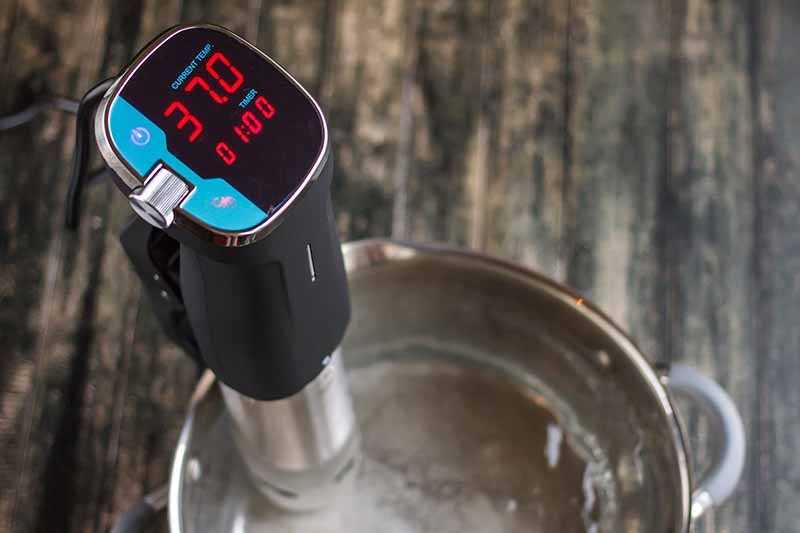
I don’t need to tell anyone how poorly this type of time commitment might fit into one’s morning routine, though those who work from home may be able to set up and turn things on without having to worry about babysitting the process too closely.
At least where breakfast is concerned, I already have a stainless steel egg poacher that uses about a cup of water and perfectly poaches up to five eggs in 3.5 minutes.
All I’m saying is that the sous vide preparation requires a level of pre-planning that I’m simply not willing to engage in. Others may disagree wholeheartedly!
But what about meals later in the day, namely those meaty mains?
If I’m thinking about having steak for dinner, I like to come home and make my meal whenever I’m good and ready to do so. With sous vide, you have to allow time to heat the water. If your water is very cold, that can take a really long time.
The first time I used my setup in the winter in the Inland Northwest, the starting temperature of my water was 58.5°F. And it took 45 minutes to heat to 129°F.
I quickly learned to use hot water to start after that attempt, and it was a lot faster – it took about 15 minutes to get it to 167°F, about the same amount of time it takes to preheat a grill.
This could also be an advantageous shortcut for those who might be reluctant to cook something like pasta in water that’s been sitting in their old hot water heater tank, for example, since the water doesn’t actually touch the food for sous vide, as long as your bags are sealed properly.
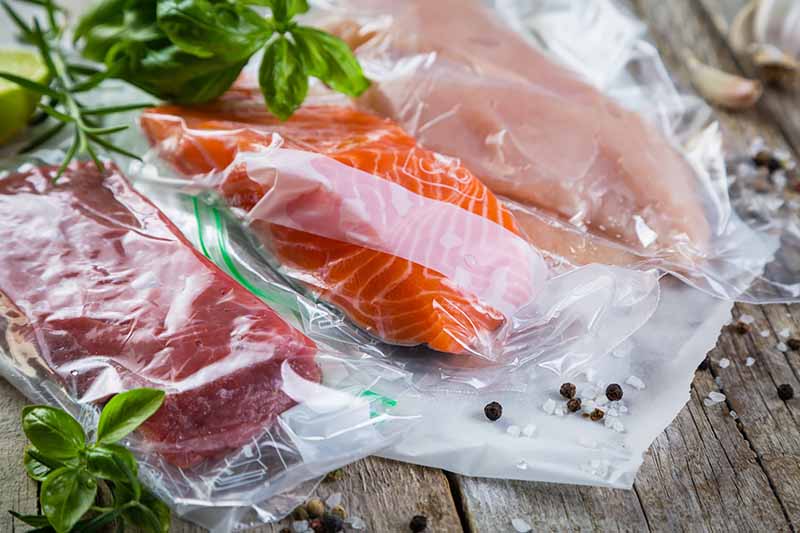
Now, if you’re cooking meat, you can put it in the water as it heats up, but then you still have to add the cooking time when it reaches your target temperature. This will take an absolute minimum of an hour, depending upon the thickness and desired doneness for our example steak.
And then you have to allow time to finish it on the stove or grill. Not to mention, all those delicious drippings and browned bits in the pan that you’d normally be able to deglaze to make a sauce simply aren’t there. The time it takes to sear isn’t enough to create a good pan sauce.
Again, meal preppers might delight in the option to pre-cook proteins to pop in the fridge or freezer when they’re batch cooking, though they will be limited by the size of whatever vessel they choose to use. But to me, this is more akin to the “restaurant prep” style of cooking, and it doesn’t mesh with my usual routine.
The day I made pork chops for dinner, we had to plan our entire Saturday around this. We came home between errands and events so I could put them in the sous vide cooker, then arranged our afternoon activities so we would be home before the four-hour cooking period was up.
If you’re just hanging out at home and have a pretty good idea of what time you want to eat, I guess that’s fine, and this could work well for you. But I already work on a deadline, and I don’t need this type of commitment in my home kitchen life.
Who Is Sous Vide For?
I’m not trying to insult anyone who loves sous vide cooking and thinks it’s the greatest thing since fire, but I don’t understand it at all.

There’s a fairly steep learning curve, it takes forever, and it wastes finite resources, as well as adding to our plastic waste problems.
It’s also really only suitable for preparing a small number of food items. Even meat and fish, the primary targets of the sous vide method, have to be thicker cuts. Most of the articles and recipes I have read recommend going no thinner than 1 inch.
I would put eggs in there too. But please, don’t make poached eggs…
Worst of all, after all that trouble and waste, my husband and I both agreed that my more traditional methods resulted in food that was cooked just as consistently, but with a much better flavor and texture (although, full disclosure, I’m an excellent cook when it comes to any meat item).
Ironically, the one thing about sous vide that attracts people is the idea of a “perfect doneness.” But guess what? You can still overcook it in the pan or on the grill – or under the broiler, which is recommended for finishing some items. Juicier, more tender proteins are not a guarantee.
I even tried going back to the friend who fired me up about this method in the first place, to see if she could make me see sous vide’s benefits through her eyes, despite the results of my experimentation. She couldn’t really refute any of the flaws I pointed out, and she did agree that “eggs can quickly go south.”
She’s still a fan, though, which is great if it works for her. The hobbyist, the gadget lover, the amateur food scientist, and those who might wish to try sous vide for other types of foods than the ones I made, may find they fall in love too.
Last, but not least, I talked to the chef at a very popular local restaurant I frequent. I knew they used a sous vide machine in their kitchen, and their lamb is to die for.
When I asked him if he cooked sous vide at home, he just laughed and said, “No, that’s too much trouble.”
Amen, my friend.
So tell me, what’s your assessment? Curious about any of the finer points that I may have missed here? Reach out in the comments below!
And for more useful information about handy kitchen gadgets and gear, read these guides next:
- Mannkitchen Pepper Cannon Review
- L’Equip Filterpro: An Affordable, High-End Food Dehydrator
- Vitamix One Blender for Small Spaces and Minimalists
© Ask the Experts, LLC. ALL RIGHTS RESERVED. See our TOS for more details. With additional writing and editing by Allison Sidhu. Uncredited photos: Shutterstock.
About Kelly Burgess
Kelly Burgess is a product review specialist who loves food, kitchen gadgets, gardening, and writing. She was born and raised in Southern California, raised her kids in Pittsburgh, Pennsylvania, and now lives in Spokane, Washington with her husband and three cats. When she’s not cooking, eating or writing, Kelly likes to read, hang out with friends, hike, and explore the great Northwest.

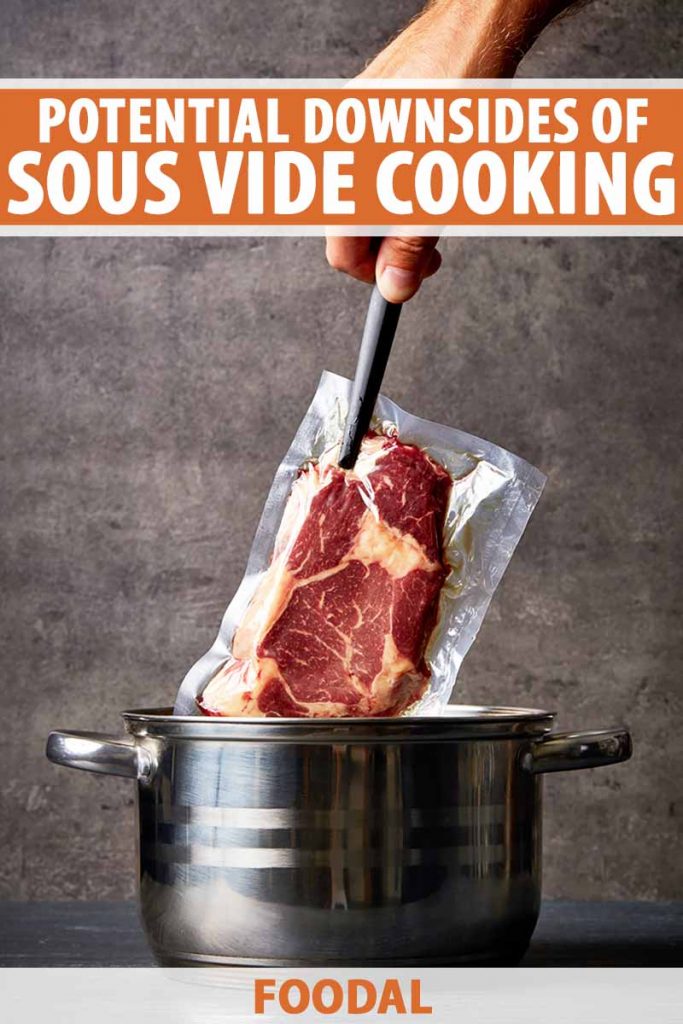



It’s great for making yogurt but that is all I use it for.
I think this was a great article. Having been looking into sous vide and deciding if I invest or not. I think I will stick with my ninja Foodi which gives me great results.
Thanks for your honest report.